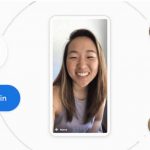The terms of engagement have changed and thus the focus on content, positioning, partnerships, and emotional selling as customer engagement points (CEP) have emerged just as the USP to drive the revenue, whether it’s B2B marketing or B2C. Let’s see how the traditional funnel has been turned upside down and how effectively a marketer can create multiple opportunities to upsell and cross-sell within the funnel.
How does Google or Yahoo or Rediff news show you news and stories of your favourite subjects or domains once you open its page on your smartphone or laptop? And how do Facebook or LinkedIn organise the posts based on our recent search and contact preferences, is all too complicated an algorithm, though appears so simple. Not so long ago, people used to wonder if their minds were being read or they were being spied upon inside their thought processes, or whether their PC had some bugs. How do our devices get so customised to cater to our choices and preferences in whatever our work areas, or hobbies and interests are? It’s almost as if they are our trusted servants.
Our privacy has been compromised and we are the ones responsible for allowing all these to happen, to enable our own lives to be easy, and comfortable. We have been enslaved to digital communication and information technology knowingly or unknowingly. From Facebook and Instagram to Alexa and Siri, we have on one hand been given power to show to the world who we are, to showcase and sell our talent and wares, and on the other hand so much has been taken from us in terms of personal data, our contacts, our favourite holiday destinations, our favourite foods, movie stars whom we love, our likes & dislikes on matters intimate to us, and whatnot, the list would be endless.
Data has become the new Oil, as we have all come to learn over the last few years, and unintentionally or unknowingly, and sometime voluntarily, and knowingly too, we have shared our personal information at various instances, inside a mall, at some events or seminar, or while filling customer feedback form, or while ordering a garment online, or while buying a mobile connection, or maybe even at a petrol pump. These data are sold for thousands of reasons and purposes, sometimes for behavioural research, and sometimes for consumer purchase behaviour, and sometimes just for mass communication to promote certain products and services. Agencies create databases based on geographical area, age group, gender, income class, and so on, to create value out of it.
As consumers are exposed to new inventions and innovations in communication, mobile, and robotics technology, they feel empowered, no doubt, but many times feel overwhelmed too with loads of information and voices and options available to access the information they seek. From a marketer’s and a marketing organisation’s perspective, these have been very challenging times, because they have to capture consumer’s attention in a very short span of time.
This is so because customers want what they seek or desire to appear instantly on their phone’s screen as soon as they search for a product or service. While technology providers have designed the software to give power in the hands of consumers, they have to also concede that the terms of engagement have been decided by the consumer itself, and technology has to always adapt to client’s demand, however erratic or irrational it might appear.
To meet the customer’s unstated demand from the communication and search-engine tools and technology, Marketing has undergone a sea of change over the past decade. How the terms of engagement and terms of consumption of information, or any other services have changed over the past decade, have all changed the Marketing organisation upside down.
Upside down, literally, right from the basic approach! The old model of marketing, measured by RoI (return on investment) is replaced with a new model based on return on engagement (RoE). It’s a complete 180° reversal of the traditional funnel which used to be wide at the top and narrow at the bottom. The narrow spout on the top represents the stage where the prospects start engaging with the marketer.
The top is a narrow spout while the bottom base is wide – and the base grows wider as the marketer is never supposed to qualify anybody out once they have entered the funnel. It is so because once the prospect is inside, whether they buy or not, they may always be a potential source of reference or information to another prospect for similar product or service. And if they buy, it opens doors to upsell, or cross-sell on the very same platform.
The key to engage and to ensure that the engagement work, as a marketing strategy, is to observe where and on what type of network or forum the customers and prospects chat upon and to listen intently to their conversations. Marketers can use geotargeting, a tool, based on location data and specific characteristics, to reach out to a certain set of clients based on demography, keyword, behaviour, and special interest, in a localised area or territory. Pay-per-click ad campaigns on Google, Facebook, LinkedIn, Bing, and Twitter make use of geotargeting.
The narrative has changed, and so has the dynamics between sales and marketing. From the traditional structure of information hierarchy and exchange, the boundaries have blurred, overlapped, and probably even merged. Sales is also supposed to be a marketer’s role at times, and while delivering value around products and services over a long period of time, it’s difficult to ascertain or control where marketing stops and selling starts.
To have the narrative pitched strongly and to be intently focused to the audience at which it is targeted, we see an ever-growing role of content marketing. In fact content creation is a very integral part of the marketing communication and is crucial to attracting the customers to pass through the narrow top of the funnel. So the marketing communication and sales strategy has to be built around the content to engage with the prospect at every stage of their decision making journey.
The whole experience for a prospect or customer is integrated with the narrative. Just as the USP (unique selling points) in earlier days used to remind customers of the benefits and key driving-to-decision factors, the engagement model requires a system for developing engagement strategies. CEP (customer engagement points) suggests the ways how it can be done. The four key areas that facilitate effective CEP or engagement strategy are Content, Positioning, Partnerships, and Emotional selling. Today we see that messaging, stories, and ads all are designed to connect and engage with the customers through their decision making journey, and even beyond, to gain loyalty over the long term.
All marketing models are now thus built around the customer, not around the company or marketing organisation, and it’s based entirely on four key factors, being receptive and being responsive to customer’s stated intent and to anticipate customer’s intent, having strong data analytics, designing content that takes the customer smoothly towards decision-making, and then helping the customer’s buy, through a strong product or service offering packaged with long-term loyalty benefits.
In a way, the current prevailing concept of customer lifecycle management has killed the traditional funnel and calendar. Now the marketers do not have a weekend or holiday, they are rather more efficient at work during weekends and even while on holidays, capturing travel and movement data, and studying behaviour and preferences at different engagement points.
The science has become more complex, but at the same time very exciting and interesting, not only for the customers but also for the product innovators and marketers who have to very smartly choose their audience and to decide what value they are going to offer beside solving customer’s problems.
















